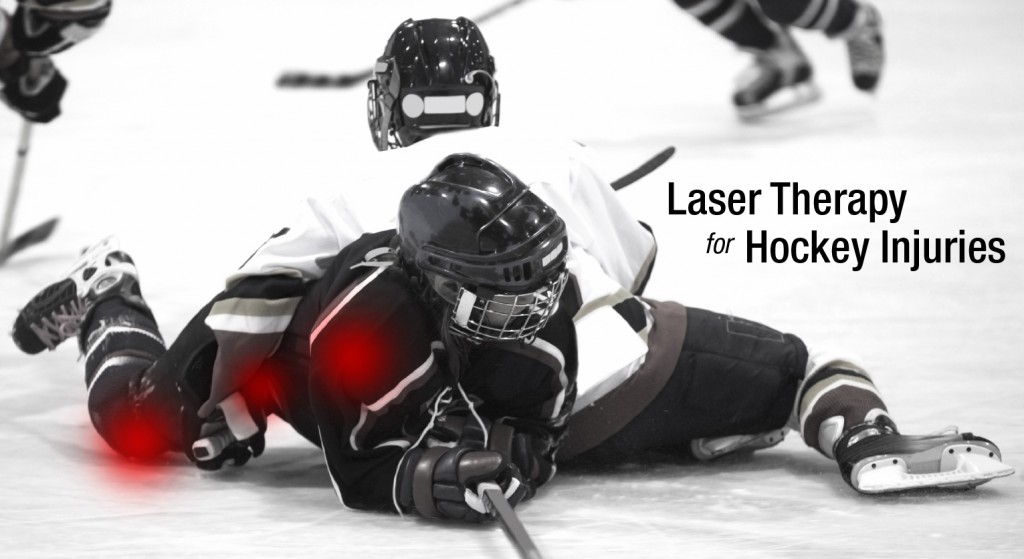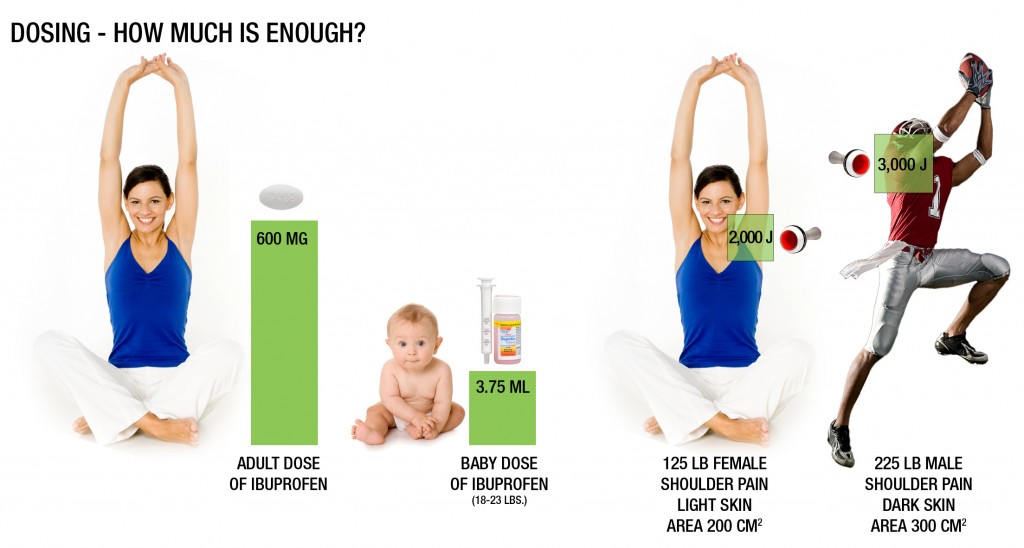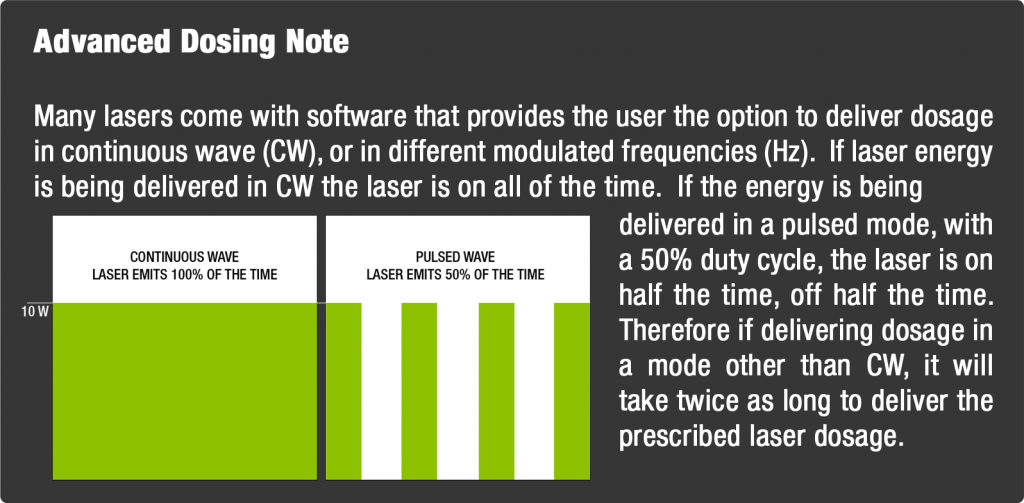Learn tips about Class IV laser therapy and other health related topics on the LightForce Therapy Lasers blog! Check back weekly for updated posts.
Guest Blog by Dr. Perry Nickelston DC, NKT, FMS, SFMA
Hockey players take some hard knocks – and not just the “face-smashing against Plexiglas” ones you see on YouTube. Heavy-duty pads can help protect against some bumps and bruises resulting from hard hits, but impact injuries still take their toll. There are also the less dramatic (but equally as crippling) overuse injuries like sprains and strains caused by repetitive motion and intense training.
With so many demands on their bodies, tough players need powerful modalities to help keep them off the bench and in the rink – which is why numerous professional hockey teams rely on class IV laser therapy. By reducing pain and inflammation quickly and effectively, laser therapy has become a go-to modality for many professionals, both on and off the ice.

Here are 3 common hockey-related injuries that respond particularly well to laser therapy:
Groin Pain and Adductor Strains
Proximal adductor strains and groin pain injuries are common in hockey. These types of injuries can be difficult to recover from because of their involvement in controlling the skates on ice. The pectineus and adductor (longus, brevis, and magnus) are often the culprits, as they play a synergistic patterning role in hip flexion and extension.
Application of laser therapy with an open cone attachment to the pectineus and adductor complex can help reduce inflammation and pain in these areas. Total dosage may range from 3,000 to 6,000 joules depending on the size of the area being treated. Generally your target dosage should be about 10 J/cm2. Depending on the laser model being used, the clinician can treat with anywhere between 10-25 watts of power, with the length of treatments being dependent on the power used. Typically, 6-10 sessions should be scheduled, followed by reassessment.
Knee Sprains
Medial and lateral knee sprains frequently occur in hockey players as a result of both microtrauma and the direct trauma of impact. Often, lack of mobility in the hip and ankle contribute to excessive motion in the knee joint, while fascial snags in the soft tissue of the knee will alter elastic force transmission from ankle to the hip, leaving the player at greater risk of injury. Referred pain to the knee from trigger points in the thigh can also lead to discomfort and reduced mobility.
Ligament injuries caused by such trauma respond well to a combination of laser therapy and corrective exercise, and laser therapy can be applied during, before, or after the course of corrective exercises to reduce any related pain or swelling. For this type of injury, an open cone attachment can be used to deliver laser therapy to the medial and lateral knee (1,000 J per side), while a massage ball attachment works well on the upper thigh to cover the rectus femoris, hamstrings, adductors and vastus lateralis. For additional treatment coverage, the massage ball can also be used on the gastrocnemius, posterior tibialis and posterior knee. The target dose for these areas should be 8-10 J/cm2, and a power setting of 8-10 W is ideal to keep the treatment times short. Depending on the extent of injury, it may require anywhere between 4-10 sessions.
Shoulder Injuries
Direct impact shoulder injuries causing impingement and joint compression are another common injury in hockey. Bursitis and inflammation of the surrounding tissues can restrict range of motion, making it difficult to control the hockey stick and puck with the expected level of precision. Decreased motion over time may progress to osteoarthritis of the shoulder joint, so it’s important to assess the shoulder blade and latissimus muscle in all shoulder joint mechanics.
To effectively reduce such shoulder pain and inflammation, use a massage ball attachment to deliver a laser therapy treatment to the shoulder joint, paying special attention to the posterior capsular region, as well as the pectoralis minor and rotator cuff muscles. Continue treating into the latissimus dorsi muscle and down to the thoracolumbar fascia. Additionally, laser on the fascia of the posterior oblique sling attachments will have a noted positive impact on the shoulder range of motion. For a shoulder of average size, a dosage of 10-12 J/cm2 should be delivered at a power setting of 8-10 W, for a total of 3,000-5,000 J.
Put Laser Therapy on Your Treatment Roster
While injuries can’t be prevented, the downtime and damage they cause can be lessened with proper assessment and treatment. So, it is important to have the right tools available when injury happens. Help put pain and inflammation in the penalty box this hockey season with laser therapy!
Lasers are powerful tools that are increasingly being used for a growing number of medical applications. Lasers are used every day to remove unwanted tattoos, make incisions during surgeries, and treat aches and pains. Each of these applications works because of one of three types of laser-tissue interactions: photothermal, photomechanical, or photochemical.
Photothermal
Lasers that produce a photothermal effect use prolonged energy exposure to facilitate an increase in chromophore temperature, which in turn leads to cellular vaporization. This type of laser-tissue interaction is what occurs during surgical and hair removal laser use.
Photomechanical
Lasers relying on photomechanical effects use shorter pulses of power and thermal expansion to create acoustic waves. These waves then break up the target material into smaller particles, making it useful for applications such as tattoo removal and photo refractive keratectomy.
Photochemical
Lasers using photochemical effects do not destroy or break up tissue. Light that interacts with tissue in a photochemical manner is absorbed into the chromophores and precipitates a biological cascade of events that promotes pain relief and inflammation reduction. Photochemical laser-tissue interactions are operative in therapy applications, such as Deep Tissue Laser Therapy® and photodynamic therapy.
Want to learn more about photochemical reactions? Check out this medical animation:
Dosing is the fundamental parameter that determines if a treatment has a clinical impact – or not. When a doctor prescribes medicine, the specific condition and size/weight of a patient will affect the dosage. Similarly, the dosage for laser therapy depends on the condition and size/weight of a patient. Treatment dose in the application of laser therapy is very important to ensure that the patient will receive adequate therapeutic results.
 An infant would not take the same amount of ibuprofen as his mother – the same principle applies in laser therapy.
An infant would not take the same amount of ibuprofen as his mother – the same principle applies in laser therapy.
2 Important Parameters for Calculating Laser Therapy Dose:
1. The Size of the Area to Treat
Treatment Area (cm2) = length (cm) x width (cm)
2. The Target Dosage
Typical dosages range from 6-12 joules per square centimeter.
To determine how much energy you want to deliver, take the treatment area that you calculated and multiply it by the target dosage.
Total Energy = Target Dosage (J/cm2) x Treatment Area (cm2)
Real-Life Dosing Example:
I want to treat a 10 cm by 10 cm area with 10 joules/cm2. To calculate my total joules required to deliver the appropriate dosage, I will first calculate treatment area:
Treatment Area (cm2) = length (cm) x width (cm)
100 cm2 = 10 cm x 10 cm
Using my treatment area of 100 cm2 and my target dose of 10 J/cm2, I can now calculate my total energy required to dose this condition:
Total Energy = target dosage (J/cm2) x area (cm2)
1000 J = 10 J/cm2 x 100 cm2
Therefore, to deliver a therapeutic dose, I want to deliver 1,000 joules to the 100 cm2 area.
How Long Would It Take To Deliver that 1,000 Joules in Continuous Wave?
How long would it take to deliver 1,000 joules in continuous wave? Delivering doses in relevant treatment times is the key to why many clinics are moving to high-powered lasers. To calculate the treatment time we will use the following formula:
Treatment Time (s) = Total Energy Delivered (J)/ Average Output Power (W)
Treatment Time with a 10 watt Laser
100 seconds (1 minute and 40 seconds) = 1,000 J/ 10 W
Treatment Time with a 5 watt Laser
200 seconds (3 minutes and 20 seconds) = 1,000 J/ 5 W
Treatment Time with a 500 milliwatt Laser
2,000 seconds (33 minutes and 20 seconds) = 1,000 J/ 0.5 W
Treatment Time with a 5 milliwatt Laser
200,000 seconds (55 hours 33 minutes and 20 seconds) = 1,000 J/ 0.005 W

As you can now see – laser therapy dosing is a simple mathematical equation taking into consideration target dosage, expressed in J/cm2, and the size of the area being treated, expressed in cm2. The power output of your therapy laser determines the treatment time required to get the number of total joules into the treatment area.



